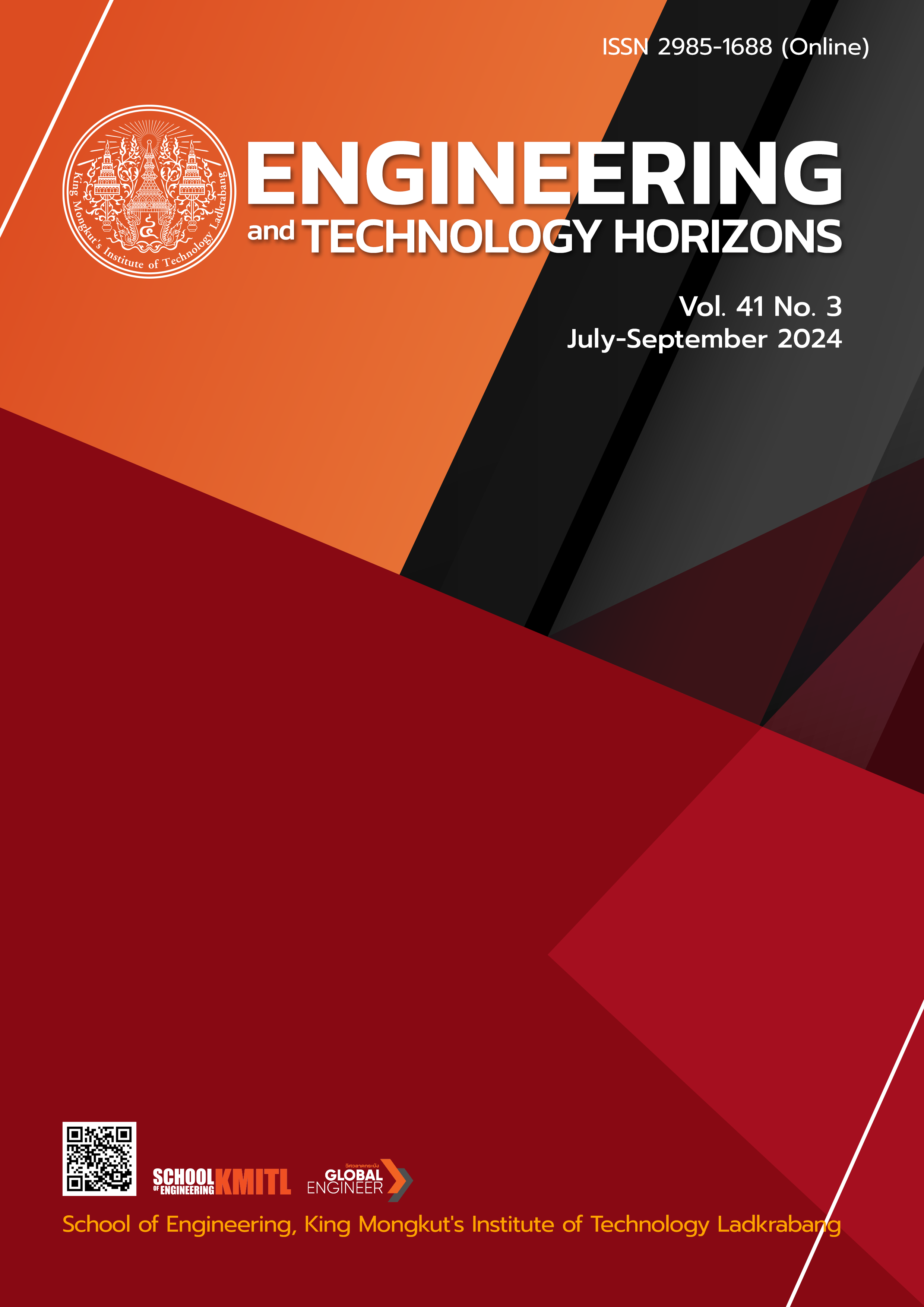Reducing Downtime Loss in the Automotive Parts Stamping Process Using Why-Why Analysis: A Case Study.
DOI:
https://doi.org/10.55003/ETH.410308Keywords:
Downtime Loss, Overall Equipment Effectiveness, Why-Why Analysis, Automotive Parts FactoryAbstract
This research aims to reduce downtime in the production process of automotive part stamping and to enhance the overall efficiency of the machinery, the case study focuses on an 800-ton stamping press in a factory. Data were collected by analyzing the overall equipment efficiency (OEE) using the developed program named Thingworx and observing employees' operations from October to December 2022. The results showed that the OEE was below the target value set by the factory. Most problems occurred during mode change activities with waste investigation such as overprocessing and waiting. It was found that the main factors impacting downtime during the production process are issues from mold changeovers, problems with metal scraps stuck in the machinery, and mold repair issues. Why-Why analysis technique and lean tools including SMED, visual control, and continuous improvement, were used to decrease time spent on non-value added activities. The results from the research showed that the average time for mold changeovers decreased from 8.77 minutes to 3.51 minutes, a reduction of 60.22%. The average time for removing metal scraps decreased from 4.72 minutes to 0.81 minutes, a reduction of 82.76%. Additionally, the time for mold repairs decreased from 1,404 minutes to 448 minutes, a reduction of 68.09%. These improvements led to an overall equipment effectiveness of the 800-ton stamping press increasing from 55.85% to 65.65%, representing a 9.8 percentage point increase. Furthermore, it enabled a reduction in production downtime costs by 298,025 baht per month.
References
C. Anderson and M. Bellgran, “On the complexity of using performance measures: Enhancing sustained production improvement capability by combining OEE and productivity,” Journal of Manufacturing System, vol. 35, pp. 144–154, 2014, doi: 10.1016/j.jmsy.2014.12.003.
P. Pornnoppadol, “Strategy in Increasing Overall Efficiency for The Can Making Industry,” M.E. Thesis, Dept Industrial Eng., Chulalongkorn Univ., Bangkok, Thailand, 1998.
K. Kidmai, “A Loss of Fin Welding Process by Using the Analysis of Overall Equipment Effective Technique: A Case Study of Moto Frame Manufacturing,” M.E. Thesis, Dept. Industrial Eng., Rajamangala Univ. Technology Thanyaburi, Pathum Thani, Thailand, 2013.
T. Ratanawilai and V. Srisuk, “Improvement of Overall Equipment Effectiveness on the Process of Wood Plank Packaging,” Naresuan University Journal: Science and Technology, vol. 23, no. 1, pp. 133–141, 2015.
K. Chumpolwong and S. Siripattarasophon, “Application of Lean Manufacturing to Reduce the Production Cost of Collagen Powder,” Jornal of Education Innovation and Research, vol. 2, no. 1, pp. 27–36, 2018.
K. Dopanya, “Reduced Bottle-Filling Machine Setup Time Waste Using Single-Minute Exchange of Die (SMED): A Case Study of a Fish Sauce Plant,” Jornal of Professional Routine to Research, vol. 11, no. 1, pp. 29–39, 2024.
A. Vatcharanurak, “An Application of Lean System to Garment Manufacturing: Polo Shirt Production Line,” M.E. Thesis, Dept Textile Engineering, Rajamangala Univ. Technology Thanyaburi., Pathum Thani, Thailand, 2009.
K. Vittaya “Improvement of Support Table to Reduce Loss in Changeover Machine: A Case Study of Tenneco Automotive,” B.E. Project, Dept. Engineering, Thai-Nichi Institute of Technology, Bangkok, Thailand, 2018.
B. Ulutas, “An Application of SMED Mrthodology,” Journal of Mechanical,Aerospace, Mechatronic and Manufacturing, vol. 5, no. 7, pp. 1194–1197, 2011.
J. Rodd, “Pareto’s law of income distribution, or the 80/20 rule,” Internation of Journal of Nonprofit and Voluntary Sector Maketing, vol. 1, no. 1, pp. 77–89, 1996, doi: 10.1002/nvsm.6090010111.
S. Charoenprasit, C. Onkhet and K. Leecharoensuk, “Reduction of Machine Setup Time in the Packing Size Changing Process,” Jornal of Business and Industrial Development, vol. 2, no. 2, pp. 32–45, 2022, doi: 10.14416/j.bid.2022.07.003.
J. Intano, “Waste Reduction in Condition Improvement Process Using Lean Techniques,” M.E. Thesis, Dept. of Logistic Engineering and Supply Chain Management, Chiang Mai Univ., Chiang Mai, Thailand, 2022.
Downloads
Published
How to Cite
Issue
Section
License
Copyright (c) 2024 School of Engineering, King Mongkut’s Institute of Technology Ladkrabang

This work is licensed under a Creative Commons Attribution-NonCommercial-NoDerivatives 4.0 International License.
The published articles are copyrighted by the School of Engineering, King Mongkut's Institute of Technology Ladkrabang.
The statements contained in each article in this academic journal are the personal opinions of each author and are not related to King Mongkut's Institute of Technology Ladkrabang and other faculty members in the institute.
Responsibility for all elements of each article belongs to each author; If there are any mistakes, each author is solely responsible for his own articles.






